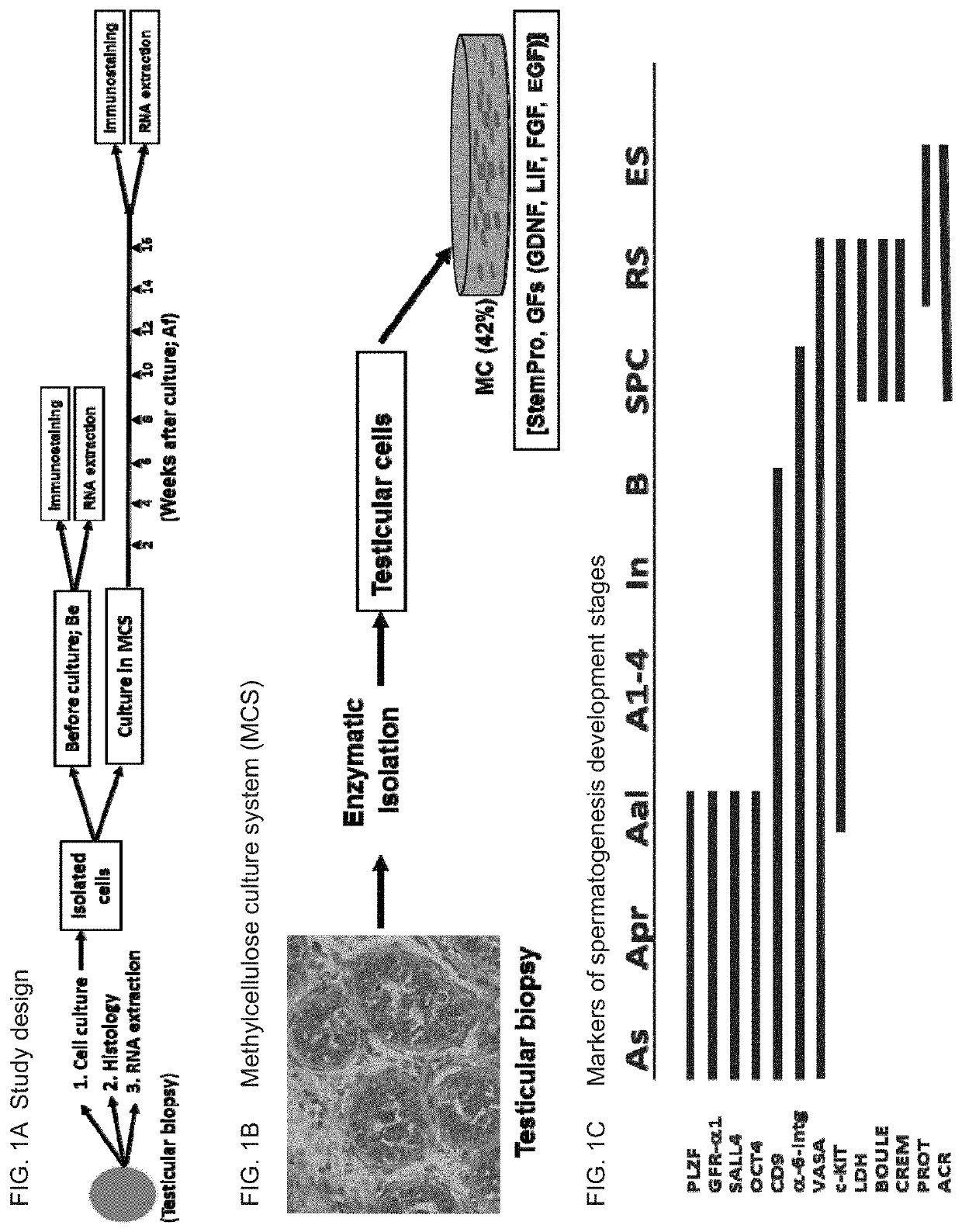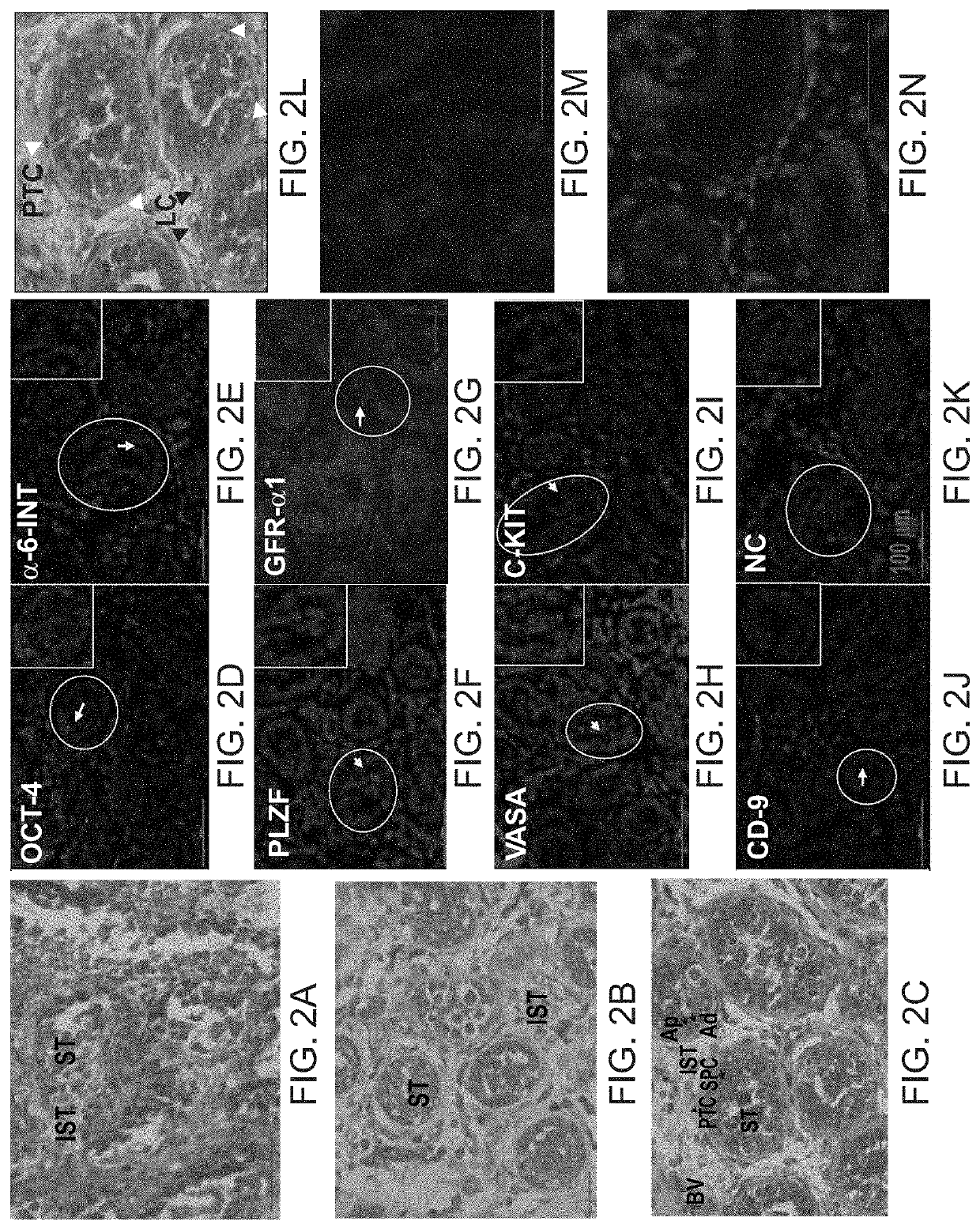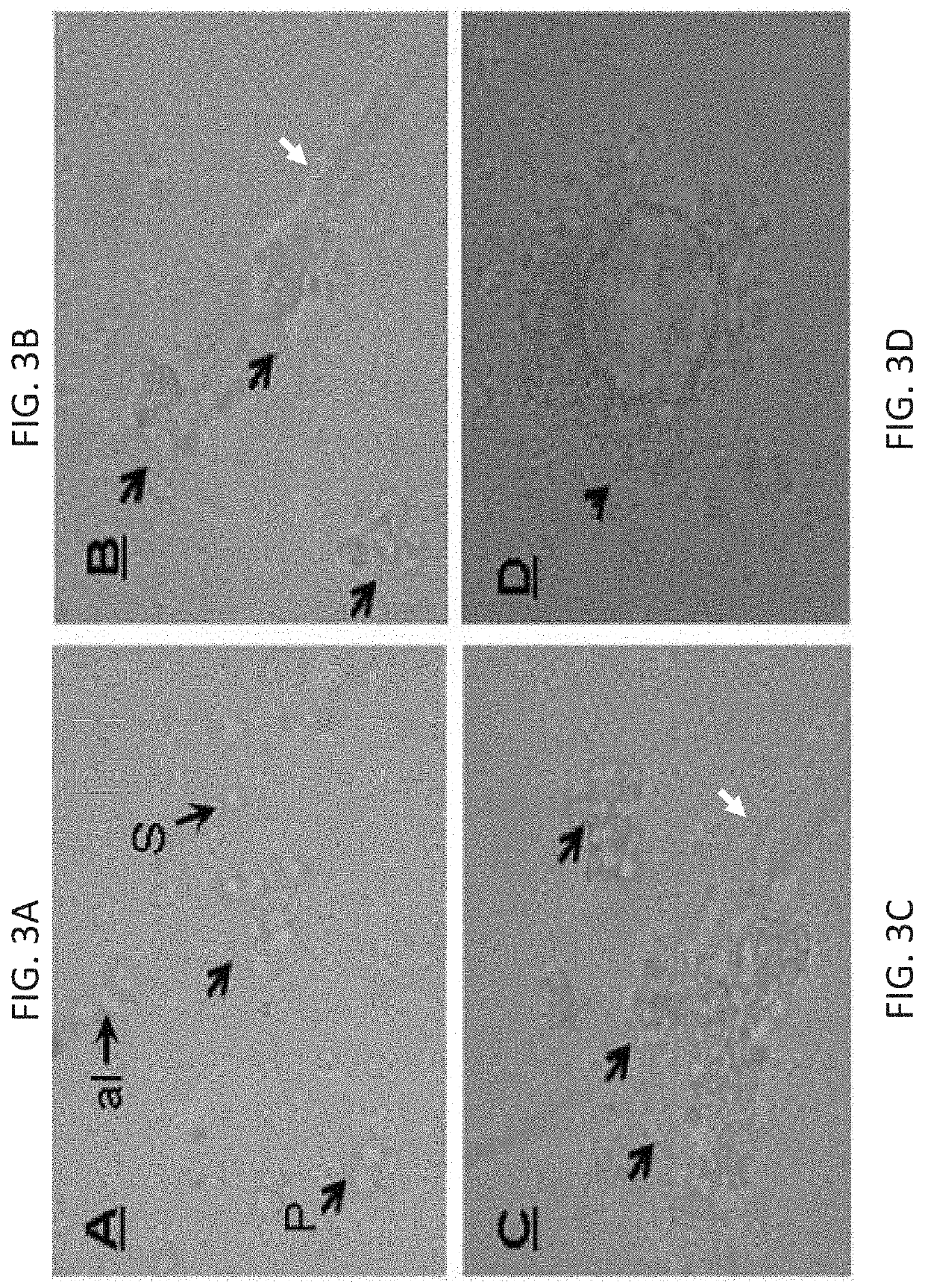Methods of maturation of human spermatogonium
a technology of human sperm and in vitro maturation, which is applied in the field of in vitro maturation of human spermatogonium, can solve the problems of unfavorable sperm cell cryopreservation for fertility preservation, inability to isolate cancer cells from testicular tissue of cancer patients, and inability to achieve safe methods of isolation of cancer cells
- Summary
- Abstract
- Description
- Claims
- Application Information
AI Technical Summary
Benefits of technology
Problems solved by technology
Method used
Image
Examples
example 1
In Vitro Maturation of Human Spermatogonia Obtained from Prepubertal Boys
[0317]Experimental Results
[0318]Testicular Biopsy—
[0319]Testicular biopsies were used from 8 prepubertal boys (6-13 years old); seven out of them after chemotherapy for cancer treatment prior to testicular biopsy, and one without prior chemotherapy treatment. All of them were assigned to aggressive chemotherapy post testicular biopsy. The effect of TNF-α was examined on testicular cells isolated from biopsies of azoospermic patients. Testicular biopsies before or after enzymatic digestion (isolated cells) were analyzed by immunofluorescence staining (IF) or by PCR analysis for spermatogenic markers. Cells were cultured in methylcellulose 3D in vitro culture system (MCS) in the presence of different growth factors. The cells were examined after 5-15 weeks in MCS.
[0320]The results demonstrate the presence (by IF and / or PCR) of some pre-meiotic markers before culture in 8 out of the 8 cases (oct4, vasa, plzf, sall...
example 2
Maturation of Sperm Using Adult Spermatogonia
[0333]Experimental Results
[0334]Germ Cells from Testicular Biopsies of Different Azoospermic Patients could Form Single Cells and / or Small, Medium and Large Colonies in MCS Culture—
[0335]The development of cells / colonies from biopsies without (−) or with (+) sperm of the different groups of azoospermic patients were examined for several weeks / months in MCS. The development of cells in MCS was divided according to: cells (single, pair, aline, and colonies (small, medium and large). The results are summarized in Table 5 below.
TABLE 5Summary of developed cell / colonies in vitro from isolatedcells of testicular biopsies without or with spermDiag. / coloniesdevelop.SpermCellsSmallMediumLargeAll−2 / 17 (12%)9 / 17 (53%)4 / 17 (24%)2 / 17 (12%)+8 / 20 (40%)7 / 20 (35%)5 / 20 (25%)0 / 20 (0%) Table 5: The azoospermic patients (marked “All”, n = 37) were divided according to the findings of sperm in IVF lab into azoospermic patients with (the “sperm” column is marke...
example 3
Differentiation of Spermatogonial Stem Cells in a Medium Comprising TNF-Alpha (TNFα)
[0339]Isolated testicular cells (from azoospermic adult patients) were cultured in methylcellulose culture system (MCS) in medium alone (stemPro and growth factors as described in the “general materials and experimental methods”) (control; CT), or with the addition of tumor necrosis alpha (TNFα; 20 pg / ml) for 14.5 weeks (Ws) for patient (No. 1). It is noted that TNFα can be used at a concentration range of 1-200 pg / ml.
[0340]The expression of the different spermatogenic markers were examined by immunofluorescence staining using specific antibodies for each marker before culture (BC) and after culture (AC) in methylcellulose culture system (MCS) after 14.4 weeks. The results are presented in Table 10 below.
TABLE 10Effect of TNFα on development of spermatogenic markers in vitro (MCS)Spermatogenesis markersPost-PatientPre-meioticMeioticmeiotic#TreatmentBC / ACVASAPLZFSALL4CREMBOULEACROSIN1BC+++−++CTAC+++−+...
PUM
| Property | Measurement | Unit |
|---|---|---|
| temperature | aaaaa | aaaaa |
| temperature | aaaaa | aaaaa |
| volume | aaaaa | aaaaa |
Abstract
Description
Claims
Application Information
 Login to View More
Login to View More - R&D
- Intellectual Property
- Life Sciences
- Materials
- Tech Scout
- Unparalleled Data Quality
- Higher Quality Content
- 60% Fewer Hallucinations
Browse by: Latest US Patents, China's latest patents, Technical Efficacy Thesaurus, Application Domain, Technology Topic, Popular Technical Reports.
© 2025 PatSnap. All rights reserved.Legal|Privacy policy|Modern Slavery Act Transparency Statement|Sitemap|About US| Contact US: help@patsnap.com



